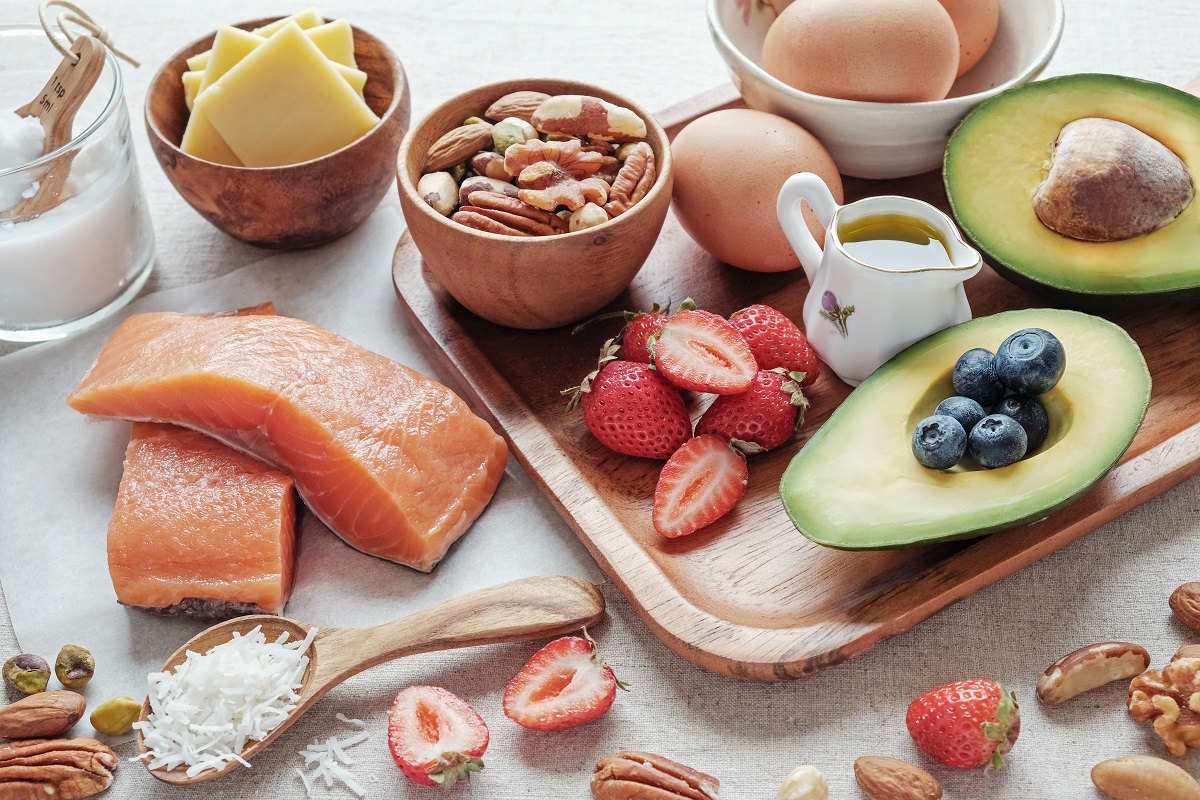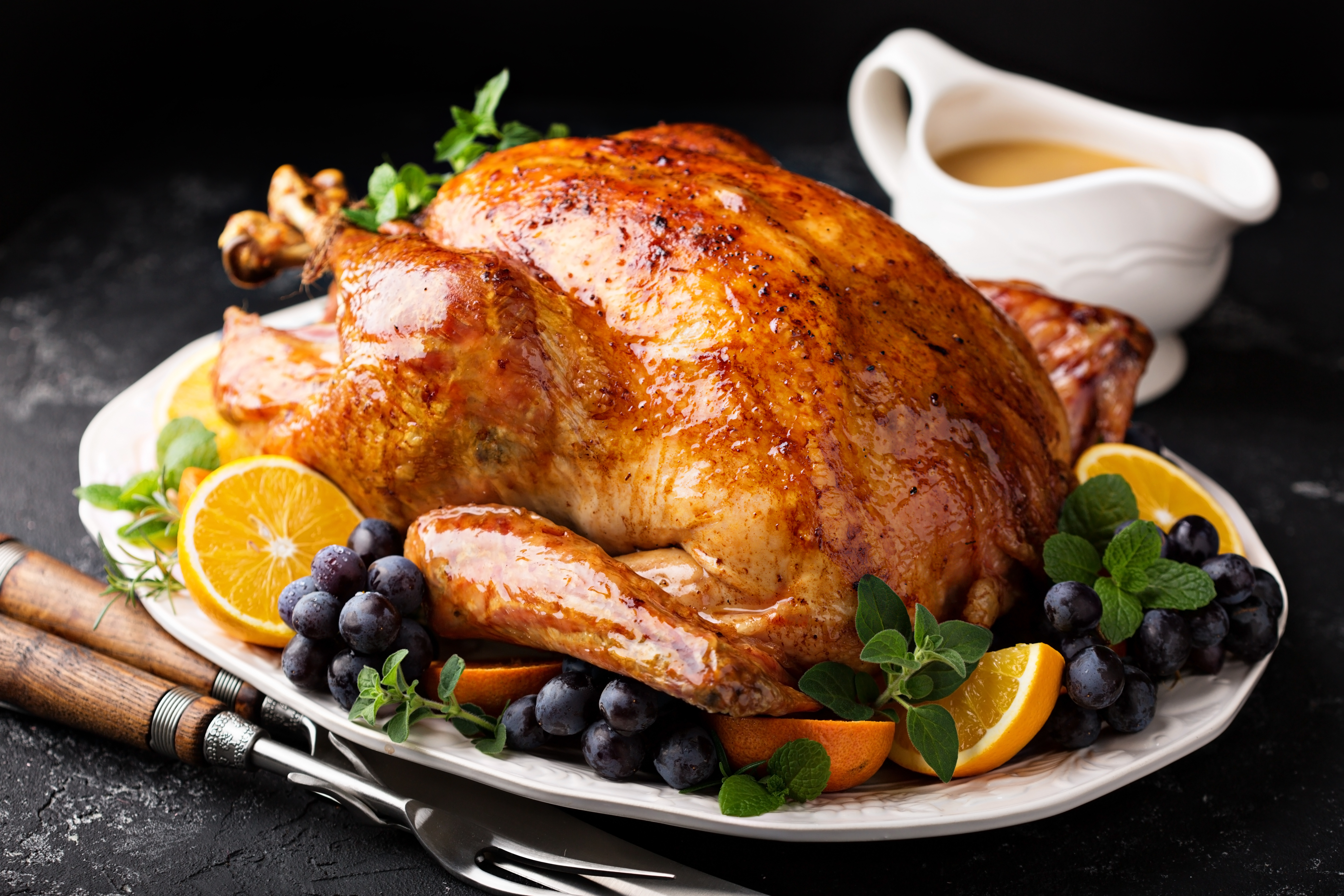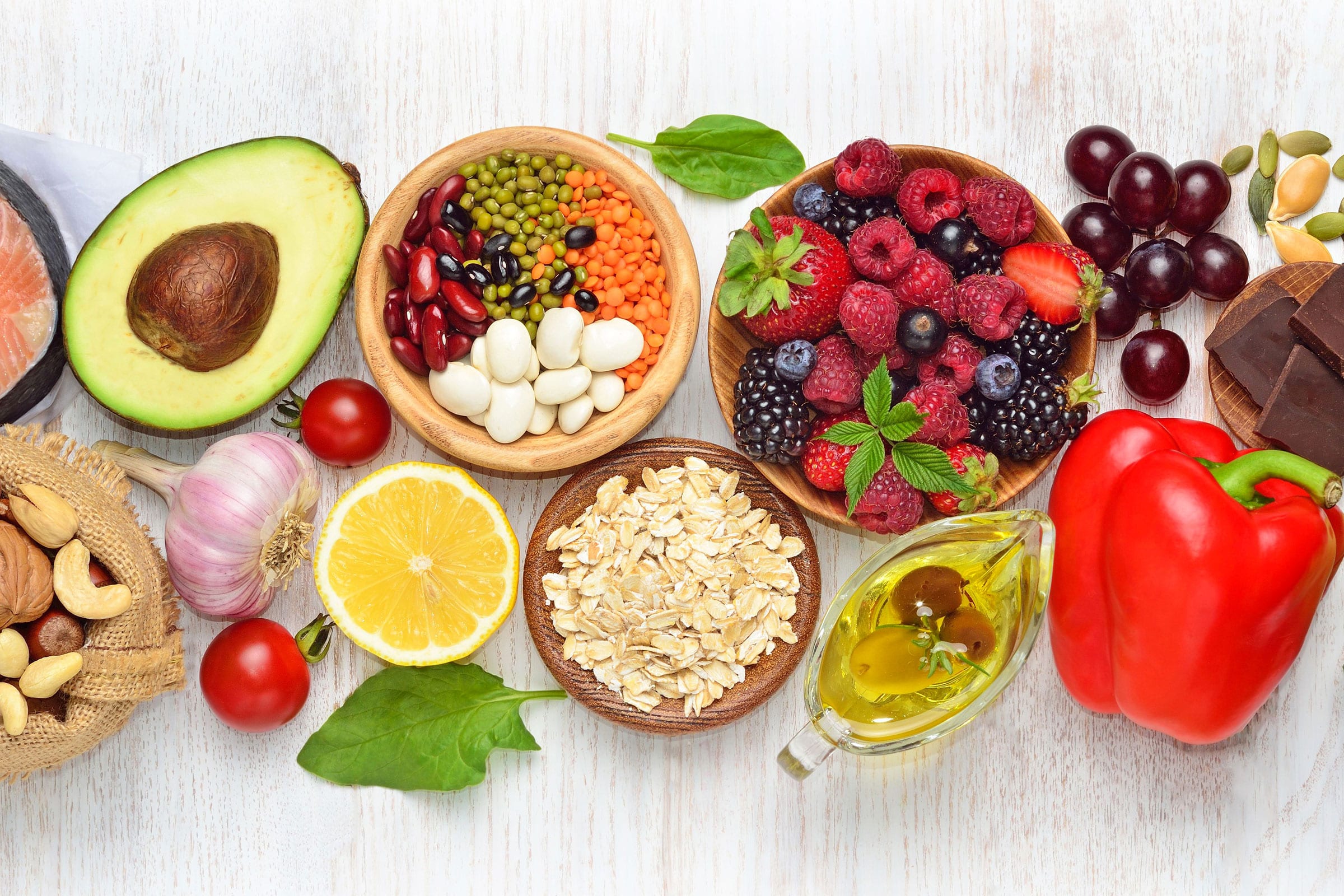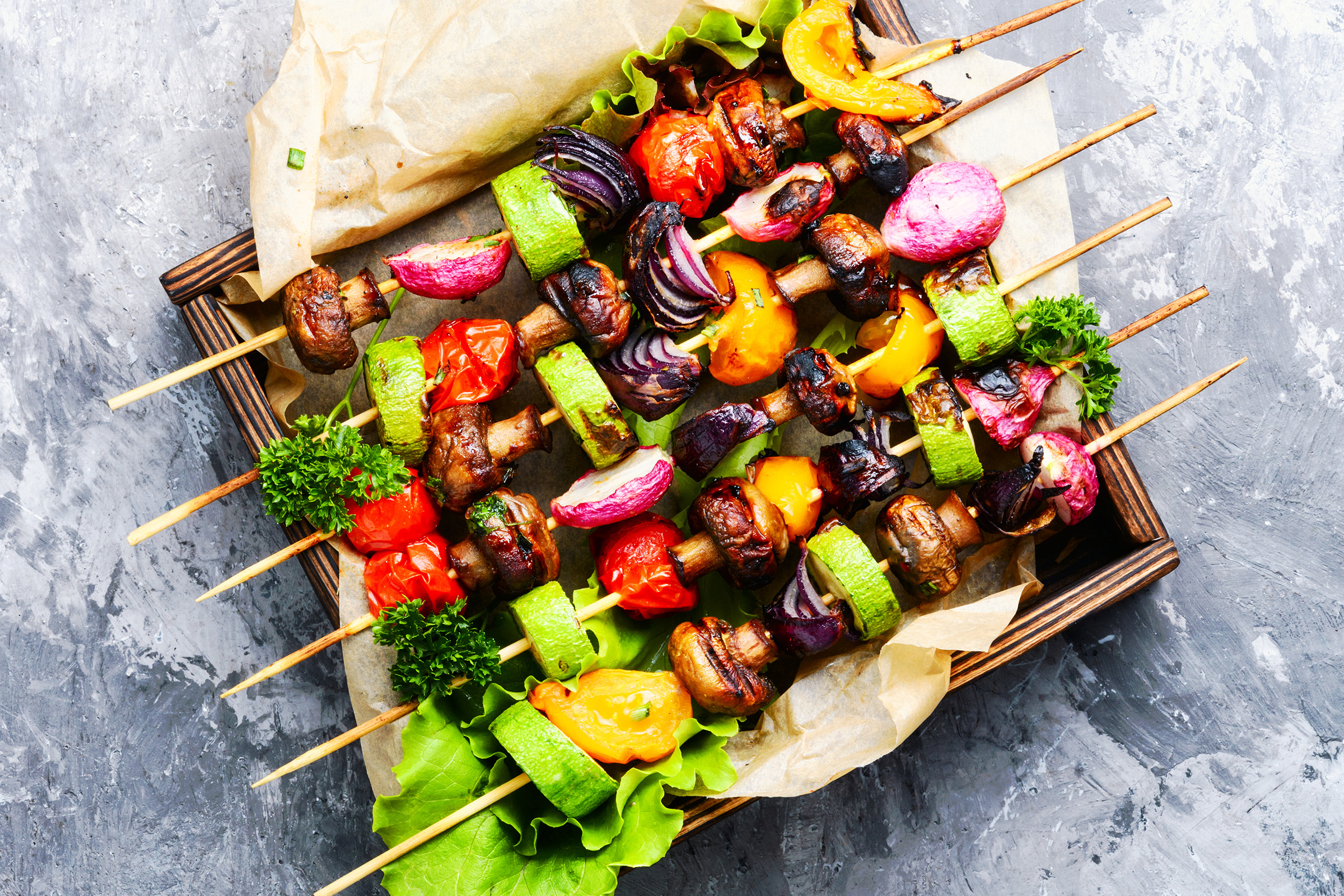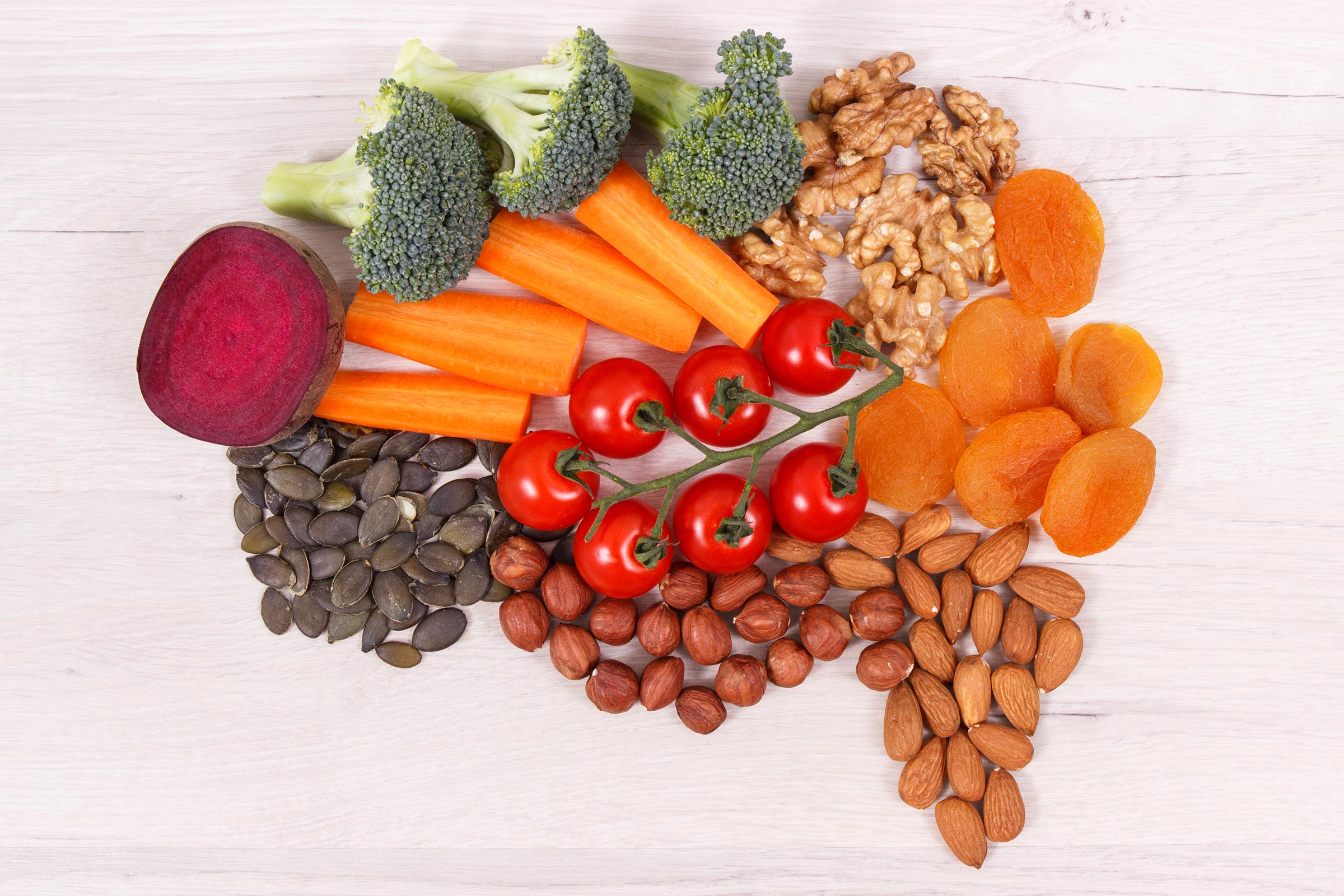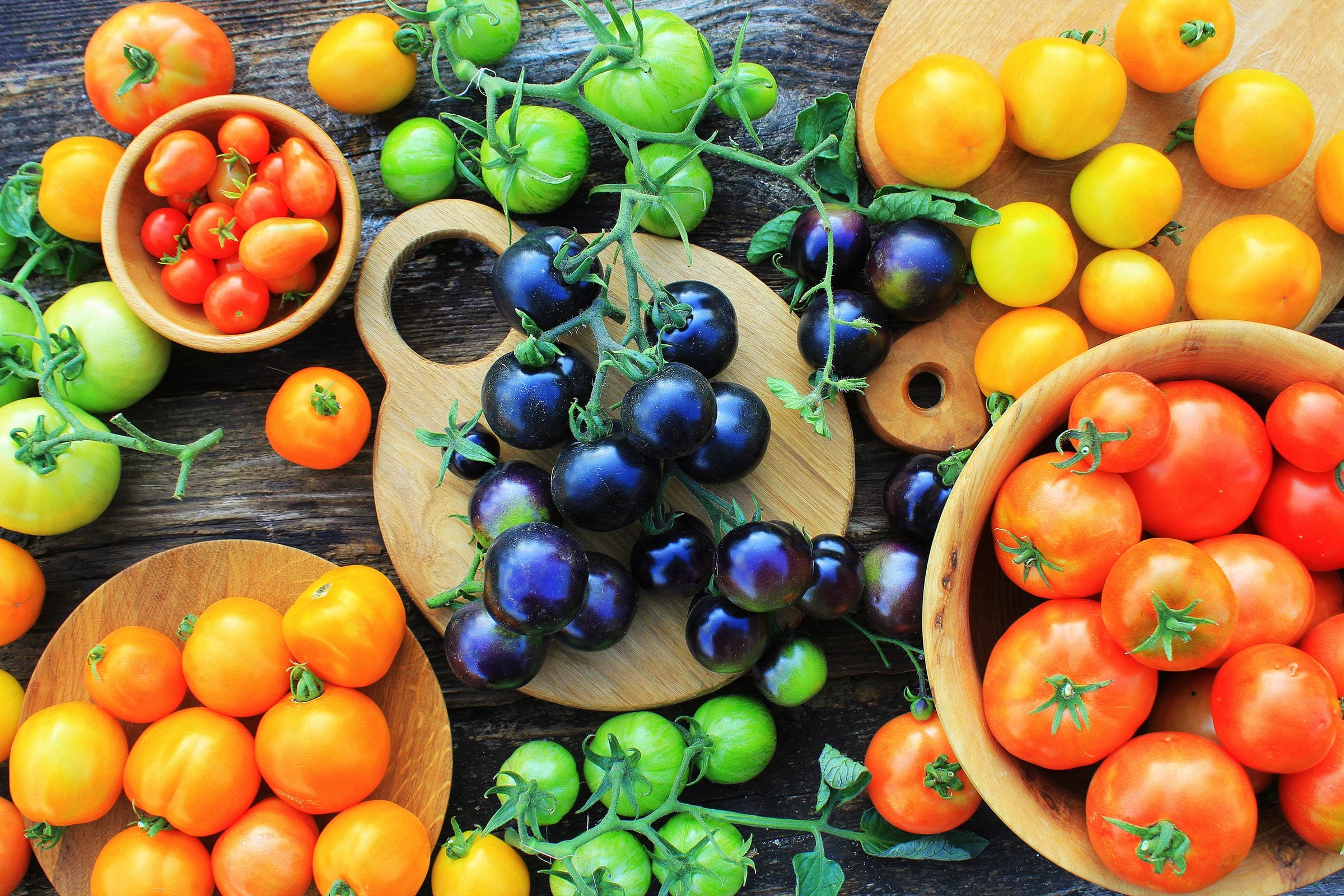It’s a Beauty, but is it Safe?
According to the CDC, handling poultry (chicken and turkey) incorrectly and undercooking it are the most common problems that lead to foodborne disease outbreaks linked to poultry. These outbreaks increase every November and December due to improper food handling at holiday parties and dinners.
Follow these five tips to safely prepare your next holiday turkey meal:
- Thaw your turkey safely.
- In the refrigerator in a container, or
- In a leak-proof plastic bag in a sink of cold water (change the water every 30 minutes), or
- In the microwave, following manufacturer’s instructions
NEVER thaw your turkey by leaving it out on the counter. Bacteria can grow quickly if left out at room temperature for more than 2 hours. The danger zone for bacteria to grow is between 40 degrees F and 140 degrees F.
- Clean all surfaces that the turkey comes into contact with – including your hands! Raw poultry can contaminate anything it comes into contact with and the germs that cause food poisoning are stealthy — they can survive in many places and spread around your kitchen.
- Separate raw poultry from ready-to-eat foods by using different cutting boards, utensils and plates while preparing the meal, and by separating raw poultry from other foods in the refrigerator.
- Cook poultry to the right internal temperature. Place the turkey in a roasting pan that is at least 2″ to 2.5″ inches deep and set oven temperature to at least 325 degrees F. Cooking times will vary according to the weight of the turkey and whether it contains any stuffing. Use a food thermometer to be sure that the internal temperature of the turkey AND the stuffing is at least 165 degrees F. You cannot determine if a turkey is safely cooked by checking its color and texture. Check by inserting the food thermometer into the center of the stuffing and the thickest portions of the breast, thigh, wing joint. Even if your turkey has a pop-up thermometer, still use a meat thermometer to be absolutely certain that your turkey is safely cooked. Let the turkey stand for 20 minutes before removing the stuffing or carving the turkey so that it can finish cooking.
- Chill to the right temperature. Refrigerate leftovers as soon as possible and within 2 hours of preparation (within 1 hour of preparation if outside temperature is greater than 90 degrees) in order to prevent food poisoning. Slice or divide big cuts of meat into smaller quantities for refrigeration so they cool quickly. Reheat all leftovers to at least 165 degrees F.
Eat WELL!
Source: Centers for Disease Control and Prevention
School Lunch Ideas
The Question:
Help! I need creative lunch ideas for back to school. What do you recommend for a healthy school lunch?
Meg’s Response:
Packing lunch for your child — every single day — can be a challenge. And a chore! You want to provide nutritious food to fuel your child’s brain, but at the same time, you want your child to actually eat what you pack, right?
Here are my tips for healthy school lunches:
- Get your child involved: Make a back-to-school trip to the grocery store to pick out a few healthy school lunch items. Have your child pick one or two items from each section of the grocery store that he or she would enjoy in school lunch. If you leave the store with 2 fruits, 2 veggies, 2 meat/bean foods, 2 dairy foods and 2 grain foods that your child enjoys, that will help to ensure that your child will enjoy what you pack.
- Have fun: Use cookie cutters to cut foods into fun and appealing shapes. Not a creative type? Find fun, reusable lunch containers in bright colors that will make lunch seem more…. ENTERTAINING!
- Go for the nibble tray: Instead of packing a sandwich, pack a nibble tray! Find a reusable container with lots of small compartments, and fill each compartment with something different. Kids love variety! Include cream cheese, hummus, SunButter, bean dip, salsa, guacamole and other fun dips and spreads along with fruits and veggies to dip. Add a baggie of whole wheat crackers or a slice of multigrain bread on the side for some healthy whole grains.
- Don’t feel guilty about combining healthy convenient foods with foods that you prepare from home. What do I mean when I say that? It is ok to purchase items like individual portion hummus cups, guacamole, and bean dips and pair those with baby carrots, grapes, sliced cheese, sliced cucumber circles and some whole-grain crackers for a “snacky” lunch. These “short cuts” can help to provide a healthy – and quick to assemble – lunch. What other healthy, but convenient foods can you think of to add to school snacks and lunches?
- Keep portion size in mind. Often times parents think their children aren’t eating enough fruits and veggies. Did you know that the portion size of fruits and veggies for preschoolers and elementary-aged children is 1 tablespoon per year of age? That’s right, so a 5-year old would only need about 4 whole strawberries for a serving a fruit and 10 carrot coins for a serving of veggies.
- Try School Lunch: If there is a meal offered in the cafeteria that your child enjoys, let them buy lunch. It teaches your child how to navigate a public food setting, getting them ready for middle school, high school and college. It also gives your child practice communicating needs and preferences. While school lunches historically have had a reputation of being less than perfect, things have changed. Stop by the school cafeteria and check it out for yourself. And hey – it gives you a break from packing! Can’t beat that.
- Great Nut-Free Options: Food allergies and intolerances are an additional consideration to be made for many families packing school snacks and lunches. Depending on the school’s policy, you may or may not be able to include peanuts and tree nuts. Here is a list of nut-free protein-rich foods that can be packed as a part of a healthy school lunch
Hard-boiled egg
Hummus and other bean dips
Low Fat Greek Yogurt
Edamame
Low Sodium Deli Meat and Cheese roll-ups
Sunbutter (sunflower seed) and Wowbutter (soy nut butter)
Cubed grilled chicken
Beans (chickpeas, black beans, pinto beans, pink beans, white beans)
Cottage Cheese
A Healthier Take on Summer BBQ
Q: We love hosting summer cookouts. How can we make our favorite barbecue foods healthier?
A: To put a fresh and healthy spin on your cookouts, skip the hot dogs, hamburgers, cole slaw and potato salad for lighter options that are trending now. Another reason to lighten up? Without all those mayonnaise-based dressings, your food will stay safer outside on a hot day. Here are some ideas to keep you both healthy and safe:
Lighten Up and Foil Fat with a “Foil Pack”
Opting for grilling favorites that are lower in saturated fat than burgers and hot dogs is the way to start. Go for grilled chicken breasts or lean chicken sausage and a healthier salad on the side. One of my favorite prep methods is the foil pack. Wrap individual portions of meat and veggies in foil and toss on the grill. A cool no-cook salad with zucchini noodles – also known as zoodles – adds a modern touch. Recipes below.
Healthy Hydration
While you’re at it, lighten up your drinks. Hydration is particularly important in the summer, but alcohol and sugary drinks aren’t thirst quenching and can even cause dehydration. If plain water isn’t your thing, try infusing your water or seltzer with flavor. Add fresh fruits like citrus, berries, and pineapple. Even better, use frozen fruit to both chill and infuse your drink. When you’re finished, the fruit will be defrosted, and you can eat it as a snack!
Safety First
To keep summer buffet foods safe, serve hot foods immediately and keep cool foods chilled (put a salad bowl over ice, for example). Cover food and clean and remove the serving utensils when not in use. As an extra measure, keep hand sanitizer handy so folks can clean up before digging in.
These simple swaps and precautions will keep you and your barbecue healthy and safe all summer. Enjoy!
Try these recipes at your next cookout!
Chicken, Tomato, Corn Packs
For each serving, cut a 12” piece of foil and place a boneless, skinless chicken breast, ½ cup grape tomatoes cut in half, ¼ cup corn kernels, and minced garlic to taste. Drizzle with 1 tablespoon of avocado oil or canola oil, salt and pepper. Seal all sides of the foil and grill on high until the internal temperature is 170 degrees (approx. 20-25 minutes).
Caprese Zoodles
Toss 1 package of zoodles (found in the produce section of most grocery stores) with 2 tablespoons olive oil, salt and pepper. Let marinate for 15 minutes. Add 2 cups of cherry tomatoes cut in half, 1 cup of mozzarella balls, 1/4 cup of torn basil leaves, and 1 teaspoon dried oregano. Drizzle with 2 tablespoons of balsamic vinegar.
Meg Whitbeck, MS, RD, is available for private consultations. For more information, contact RVNA at 203-438-5555.
Ava Safir, JD, MS, RDN Joins RVNAhealth Nutrition Team
Eating for Brain Health
June 2018: Eating for Brain Health
My family has a history of Alzheimer’s Disease. I’ve read about different diets that can help reduce the risk. What are they and do they work?
A healthy diet is certainly a good place to start in the prevention of many conditions, and brain health is no exception. While there’s no single diet that is proven to reduce the risk of Alzheimer’s, there is promising information about dietary approaches that may help brain function in indirect ways.
What’s key is reducing the risk of other conditions that can contribute to a decline in cognitive function. Cardiac disease and high blood pressure are both linked to a deterioration in blood vessels, including blood vessels in the brain, which increases the risk of Alzheimer’s and vascular dementia. Eating to protect your heart and lower your blood pressure can have the added benefit of lessening risk factors associated with cognitive decline. Diets that reduce cholesterol and inflammation can also contribute to a reduced risk for Alzheimer’s, again because they can reduce your risk for heart disease.
There are three eating styles that show promise in protecting heart health and reducing blood pressure, and therefore may improve brain health, as well. They are the Mediterranean Diet, the DASH Diet, and the Mind Diet. These diets all have some elements in common and it’s smart to consider incorporating these into your diet:
Up This
- Foods high in monounsaturated and omega-3 fatty acids, such as olives, ground flaxseed, cold water fish and nuts
- Fruits and vegetables, particularly green, leafy vegetables
- Whole grains and beans (legumes)
- Lean meat and occasional low-fat dairy foods
Reduce That
- Sugar – including honey, syrup, agave and other “natural” forms of sugar
- Artificial sweeteners – including Stevia, Splenda, Sweet ’N Low, Equal and sugar alcohols
- Processed carbohydrates, such as those made with white flour
- High-fat dairy products
- High-fat and processed meats, such as deli meats and bacon
- Alcohol
Although there’s no sure-fire way to completely prevent or reverse Alzheimer’s, improving your overall health through diet is certainly food for thought.
If you want to discuss dietary approaches to prevent and manage specific diseases, feel free to contact me for a private consultation at 203-438-5555
The Salad Days of Summer
In the summertime, we like to keep it fresh and simple. This year, we’re kicking off the season with salad. Easy to make, easy to eat, and delicious to boot, salads are fast, inexpensive, and versatile.
“Salads can get a bad rap,” says Meg Whitbeck, MS RDN, RVNA’s registered dietitian and nutrition educator. “People perceive them as “diet food,” or some kind of ‘penance,’ or just a bowlful of lettuce. But they are so much more!” Whitbeck’s evidence: Citrus Kale Salad and Tomato & Rye Panzanella, recipes she discovered to keep our salad days fun and flavorful.
As these recipes prove, your salad can be vegetable-based and enjoyed as a side dish or snack; or you can make it a complete meal with the addition of a protein, like beans, fish, nuts, seeds, or lean meat. Or, you can skip the lettuce altogether, like the Panzanella, and build the salad with toasted bread as the base. A sandwich in disguise!
When preparing these salads, remember these salad prep basics: Always wash your hands, cutting boards, and your produce before constructing your masterpiece. When adding meat or fish, prep your salad first, and then prepare and cook your meat and fish. This reduces the risk of contaminating your fresh salad with bacteria from uncooked protein.
Bon appetit!
Seasonal Allergies and Nutrition
Is there a link between seasonal allergies and diet?
I get this question all the time. And the short answer is YES! There is a relationship between a person’s diet/nutrition and their seasonal allergies and the connection can best be understood with an explanation of “Oral Allergy Syndrome.”
Also known as “pollen-food syndrome,” Oral Allergy Syndrome is when a person exhibits an allergic reaction in response to certain food items, typically foods that are high in pollen and allergens, such as tree nuts, raw vegetables, and raw fruits. Different foods cause trouble for different people, and typically relate to their specific seasonal allergies. But first, it’s important to note the difference between Oral Allergy Syndrome and more traditional food allergies to be sure you’re seeking the right help if you respond allergically to certain foods. Let’s start by breaking it down….
Oral Allergy What?
Those who suffer from seasonal allergies due to tree pollen, grass pollen, or ragweed can also experience a type of allergic reaction when eating foods that contain those allergens, as well. Reactions can range from mild itching and tingling of the lips and tongue to extreme itching of the lips, tongue, cheeks and throat. This kind of reaction is called Oral Allergy Syndrome. It is common in older children, teens, and young adults, and is most frequently found in people who have grass pollen, birch, and ragweed allergies.
What to Watch Out For
Allergic to ragweed? You may find yourself reacting to bananas, melon, or zucchini. Sensitive to grass pollen? Dates, oranges, potatoes, or peanuts could cause trouble. Is tree pollen your nemesis? The list of potential trouble makers is long, and includes apples, strawberries, cherries, beans, carrots, almonds, sunflower seeds, and more. The good news is that people who suffer from Oral Allergy Syndrome may be able to eat foods that typically trigger an allergic reaction if they’re cooked. Cooking alters the proteins that cause the reactions, so the immune system no longer triggers a response. Check with your doctor before trying this approach.
Food Allergies – Nothing to Sneeze At
It’s important to make the distinction between a reaction caused by the presence of pollen in certain foods, and a full-blown food allergy, which can be much more serious. There are eight major food allergens – fish, shellfish, milk, eggs, tree nuts, peanuts, wheat, and soy. In allergic individuals, these foods cause symptoms ranging from mild itching of the skin that comes in contact with the allergen, stomach upset, diarrhea, vomiting, swelling of the lips, tongue and throat, and hives to anaphylaxis, a potentially life-threatening reaction.
While those with Oral Allergy Syndrome can sometimes eat bothersome foods by cooking them, this is NOT the case for those with a traditional food allergy. If you are having any concerns with reactions to food, it is always best to see your doctor or allergist to confirm whether or not there is a true allergy present.
As a dietitian, I work with many clients who have food allergies and intolerances. We work together to examine symptoms and see what foods work best for them. I’m also able to give clients alternatives to the foods that they really miss and help create menus to be sure they’re getting the proper nutrition for their needs.
If you suspect you have a food allergy or intolerance, it’s critical to get tested by a professional, as opposed to trying to solve the problem yourself. Once you have your results, you can work with both your doctor and a dietitian to stay safe and find foods that you enjoy.
It’s allergy season. Be careful out there!
If you need help getting started on your nutritional journey, feel free to contact me for a private consultation at 203-438-5555.
Arthritis and the Anti-Inflammatory Diet
I know nutrition can help with conditions like heart disease and diabetes, but what about arthritis. Will changing my diet help my condition?
I’m sorry to hear about your arthritis but am happy to report that there are definitely things you can do nutritionally to protect against the development of the condition or lessen the severity of symptoms. Simply put, arthritis is inflammation in the joints that worsens over time. Several types of arthritis together affect millions of Americans and limit their daily activities. So, what’s the nutritional approach to help with the inflammation of arthritis? An anti-inflammatory diet. Here are key elements to keep in mind.
Out with the Bad — Foods that Promote Inflammation
Higher intake of meat and alcohol contributes to increased
inflammation in the body. Lower consumption of vitamin C in fruits and
vegetables, whether in combination with high meat and alcohol intake or
not, also contributes.
In with the Good – Foods that Help
Evidence suggests that increasing consumption of vitamin C,
vitamin D found in fatty fish, omega 3s found in ground flaxseeds and
flaxseed oil, and nutraceuticals such as glucosamine and chondroitin may
help with arthritic symptoms. Phytochemicals found in a wide variety of
foods such as fennel, garlic, basil, rosemary, pomegranate, turmeric,
red pepper, cloves, anise, and ginger can also fight inflammation.
Lighten Up
For osteoarthritis in particular, weight loss is effective
because excess weight strains the joints. As little as a 5% reduction in
weight from a sensible diet— in an overweight person — can bring an 18%
gain in overall functioning. While it’s not recommended that people at a
healthy weight attempt to lose weight, everyone benefits from vitamins
A, C, D, E and omega-3s.
Translating it to the Kitchen Table
The anti-inflammatory diet isn’t new. In essence, it’s similar
to the Mediterranean diet, which has myriad health benefits beyond
reduction of inflammation. The recommendations from the Academy of
Nutrition and Dietetics include:
- Fish: 3-4 oz. fatty fish (cold water fish like salmon, tuna, scallops, sardines, herring) twice a week. If you’re not a fish fan, try taking 600-1,000 mg of fish oil daily. Omega-3s found in these foods and supplements can help with pain, swelling, stiffness, and tenderness.
- Nuts: 1 ounce per day to provides benefit from vitamins B6 and Omega-3s. Choose walnuts, almonds, pistachios, or pine nuts.
- Fruits and vegetables: Nine or more 1-cup servings per day helps due to the antioxidants and phytochemicals they offer. Quick tip — the brighter the color, the higher the antioxidants, so choose broccoli, spinach, kale, blueberries, cherries.
- Beans: 1 cup at least twice per week. Beans contain fiber and phytonutrients that can help lower a key marker of inflammation in the blood, and are filled with protein which helps with muscle health. Best choices include red kidney beans, pinto beans, and small red beans.
- Whole grains: 6 oz. of grains per day (at LEAST 3 oz. should be whole grains). A serving boils down to a cup of cooked brown rice or one slice whole grain bread. Much like beans, the fiber here is key.
- A word about night shade vegetables: Some people report more pain when consuming tomatoes, eggplants, potatoes, and red bell peppers, sometimes referred to as nightshade vegetables. If they cause discomfort for you, avoid them. Otherwise, feel free to eat them as they contain antioxidants, vitamins, and minerals!
By following an anti-inflammatory diet, you can keep inflammation and arthritic symptoms at bay. As always, it’s important to talk to your doctor or healthcare team about supplementation and what’s the best fit for you.
Meg Whitbeck, MS, RD, counsels patients in disease management through nutrition. For more information or to schedule a private consultation, contact RVNA at 203-438-5555
Introducing Meg Whitbeck, MS RDN
Meg Whitbeck with the men in her life: (l to r) her husband Drew and sons Luke and Parker
One of the great things about Meg Whitbeck, MS RDN, is that even though she’s a registered dietitian and nutrition educator — and an excellent one at that — she doesn’t make you feel bad if she catches you eating a piece of decadent cheese. Or a malted milk ball. If she catches you doing a juice-only fast, however, Meg may look at you askance.
Meg knows that good nutrition is a critical component to feeling your best, and that means eating a breadth of the right things for you, not depriving yourself altogether.
Another great thing about Meg is that she is deeply and genuinely kind, and one of the more comedic people in the world. Which makes it pretty spectacular that she’s right here at RVNAhealth.
Meet Meg Whitbeck …
Where did you grow up and where do you live now?
I grew up in Brewster, NY and now live in Ridgefield, CT.
How long have you been at RVNAhealth?
I began working here in January 2016.
What brought you to RVNAhealth?
The opportunity to be a part of RVNAhealth’s center for excellence and to spearhead our nutrition program.
Describe your role at RVNAhealth.
I am the Registered Dietitian and Nutrition Educator. I support our clinical staff by offering outpatient nutrition counseling and education. In addition, I hold classes and seminars throughout the year and offer community-based nutrition events.
What is your favorite part of your job?
Definitely spending time with my patients and improving the quality of their lives.
Did you ever consider becoming a nurse?
Mmmmm. No.
When did you realize that you wanted to become a dietitian?
At age 23, when I was diagnosed with celiac disease and met my
dietitian — this amazing woman who helped me to eat again. I realized
that — behold! — I could merge science, healthcare, and people. I never
looked back. At the time, I was a molecular genetics technician, so my
career changed dramatically. I still have a soft spot for genetics,
though!
What do you love to do when you’re not working?
Run, bake, dance, volunteer!
What is your hidden talent?
I sing and play the piano.
What would you do if you won the lottery?
I have nine siblings and would pay off all of their mortgages.
In addition, I would buy a big house in Ridgefield and host many
wonderful parties! I would definitely keep working because I LOVE my
job!
Do you have a favorite RVNAhealth moment or story?
There have been so many! Lately, I have been inspired by my colleagues who work so tirelessly to provide exceptional care. I am in awe of the skill sets and expertise that I am surrounded by here at RVNAhealth. From marketing to development, nursing to occupational therapy, rehab to hospice – we have the best of the best here.
What are you doing for Thanksgiving*?
I am helping with a new effort in town: The Ridgefield Community Thanksgiving Dinner for local people looking for a nice meal to share. I will be overseeing food handling and food prep as part of a collaboration between a collection of local organizations, including St. Mary’s Parish, Meals on Wheels, Jesse Lee, Dimitri’s Diner, Melillo Farms, Bernard’s, Adam Broderick, Caraluzzi’s, Genoa Deli, JK’s Original Texas Hot Weiners, and RVNAhealth, of course! Plus, some lovely anonymous supporters.
I will be there with my husband and sons and we are going to have a ball!
*This post was prepared in November 2018.
What is your favorite book? Movie?
My favorite book is The Count of Monte Cristo and my favorite movie is The Princess Bride.
If you had a racehorse, what would you name it?
Slow Poke
If you could eat one food for a year, what would it be?
Soup!

